- News
- Reviews
- Bikes
- Accessories
- Accessories - misc
- Computer mounts
- Bags
- Bar ends
- Bike bags & cases
- Bottle cages
- Bottles
- Cameras
- Car racks
- Child seats
- Computers
- Glasses
- GPS units
- Helmets
- Lights - front
- Lights - rear
- Lights - sets
- Locks
- Mirrors
- Mudguards
- Racks
- Pumps & CO2 inflators
- Puncture kits
- Reflectives
- Smart watches
- Stands and racks
- Trailers
- Clothing
- Components
- Bar tape & grips
- Bottom brackets
- Brake & gear cables
- Brake & STI levers
- Brake pads & spares
- Brakes
- Cassettes & freewheels
- Chains
- Chainsets & chainrings
- Derailleurs - front
- Derailleurs - rear
- Forks
- Gear levers & shifters
- Groupsets
- Handlebars & extensions
- Headsets
- Hubs
- Inner tubes
- Pedals
- Quick releases & skewers
- Saddles
- Seatposts
- Stems
- Wheels
- Tyres
- Health, fitness and nutrition
- Tools and workshop
- Miscellaneous
- Cross country mountain bikes
- Tubeless valves
- Buyers Guides
- Features
- Forum
- Recommends
- Podcast
TECH NEWS
Eurobike 2011 Demo Day - Giant, Canyon, American Classic, Nuvinci, Grippp... and the Stringbike
Tuesday at Eurobike means Demo Day, and that means busloads of hacks descending on the pretty mountain town of Argenbühel to check out new kit and ride nice bikes on smooth roads. In the sun, this year.
And ride nice bikes we did: Mat and Jo took out a brace of Cervelos and Canyon's new alloy race bike, the Ultimate Al. More on that later. Dave, on the other hand, had to make do with an electric Merida, and a bike that was powered by string. Really. String.
Grippp gloves
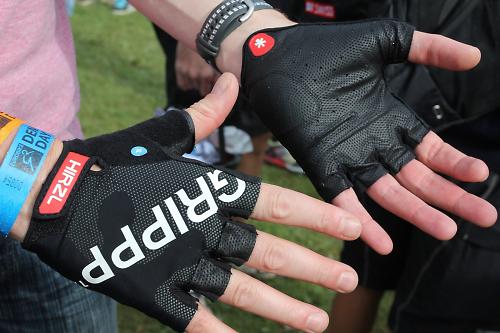
Hirzl's Grippp Tour SF gloves were very popular among the assembled journos, as Hirzl had correctly deduced that giving all the hacks a free pair would entice them along to the stand. And we're glad we went, because they look like good mitts. The Grippp gloves use a kangaroo leather palm that Hirzl claim doesn't lose any grip in wet conditions. road.cc's own Jo Burt has sported a pair for cyclocross racing in the past and can vouch for their effectiveness in muddy conditions and Robert from Grippp was on hand with a variety of handlebars and a spray gun to simulate a wet ride. The Kangaroo leather doesn't hold as much water as a standard leather palm, and certainly the test gloves (which had been subjected to repeated spraying) were still dryish when we got out sticky mitts on them, and didn't seem to lose any grip when sprayed. They'll need further testing though. Lucky we've all got a pair now...
Giant Carbon frames and new wheels
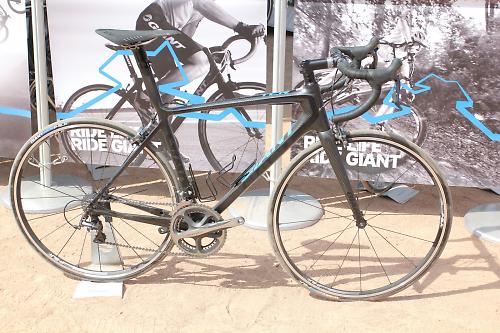
We got to see Giant's new Carbon bike range at the Demo Day. One of the bikes - the TCR Advanced – we'd already seen, and ridden, at the Ultegra Di2 launch at the UCI HQ in Aigle, and you can read our thoughts on it here. The TCR advanced has a big brother, the TCR Advanced SL, which is the bike that the Rabobank WorldTour team use. There's also a new Defy Advanced which is cut from very similar cloth.
Let's start with the Advanced SL. Giant have long been pretty beefy in the head and down tube to keep things nice and stiff in the front triangle, and this bike builds on last year's design and makes it even beefier. The head tube particularly is much deeper in section and we'd wager that the downtube is a bit bigger too, though we didn't have a 2011 bike to compare it to.
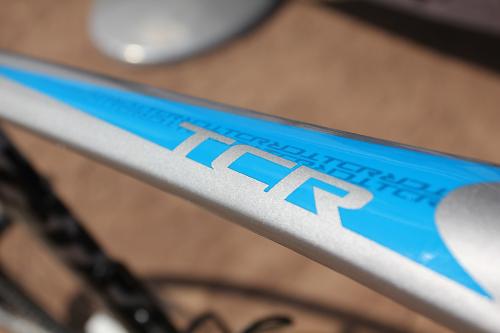
The Advanced frame uses a very similar design produced using a lower grade of Carbon. It loses the integrated seat mast too, and the changes mean it's a lot cheaper: you'll pay around €2,500 for an SL frame (prices are in Euros round here...) and about €1,000 less for the standard Advanced.
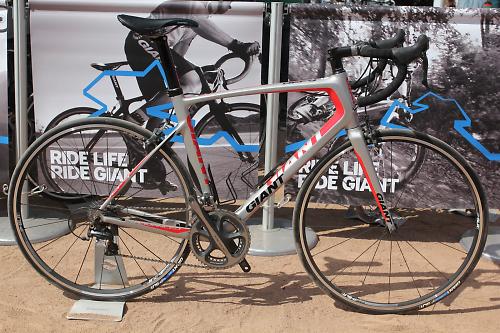
The Defy Advanced is the sportive geometry bike; it's up to 2cm shorter in the top tube (depending on size) and 1cm taller at the front, though all the Advanced bikes (in common with the Cervelo S5 we rode on the day) are quite tall at the front, especially in the larger sizes.
Giant was also showing off its new wheelsets, the 50mm Carbon/Aluminium P-SLR1 Aero and the lightweight Aluminium P-SLR1 that was fitted to the test fleet. We're no strangers to the P-SLR1 as we've already had some arrive in the office, and a very well put together alloy wheel it looks to be. Giant claims they weigh 1,390g and we've not put them on the scales of truth yet, but they are pretty light.
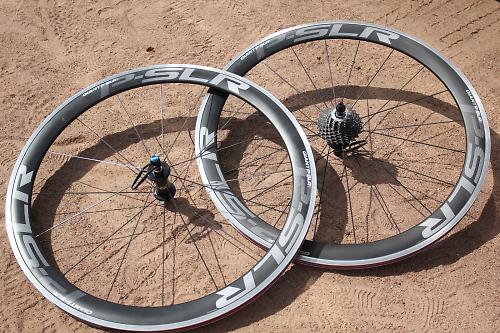
The P-SLR1 Aero weighs in at 1,575g (claimed) which isn't half bad for a Carbon/Alu deep section, although they're not cheap at £1,249.99. The Alloy wheels retail for £749.99 and there's a cheaper P-SL0 for £449.99 which tips the scales at about the same as the Aero wheelset.
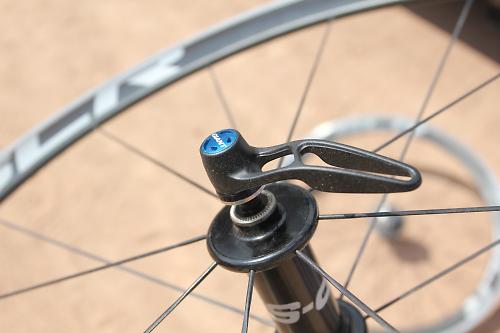
All the wheels feature a single-handed quick release system which uses a notch on the non-lever side that locates into the axle slot. once it's in you can tighten the wheel by spinning the lever until you hear the clicks. It reminded us (a lot) of the DT Swiss skewers, and although Giant didn't let on who made their wheels they did say they weren't produced in-house. And we noticed that they had DT Swiss rim tape too. And they use DT Swiss ratchet internals for the freehub.
American Classic Mag Tubeless wheelset
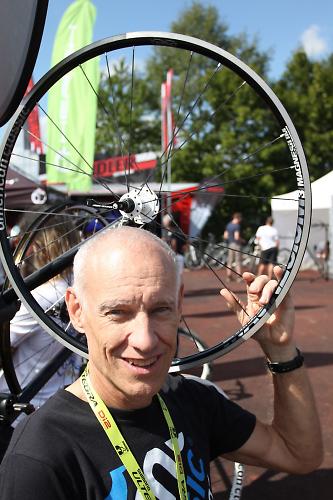
We spoke to Bill Shook at American Classic's stand, who was keen to show us their new Magnesium wheelset. By changing the shape of the rim Bill has managed to shave about 20g off the weight, and it now weighs in at an extraordinary 280g, lighter than most tubular rims. The whole wheelset tips the scales at a claimed 1108g.
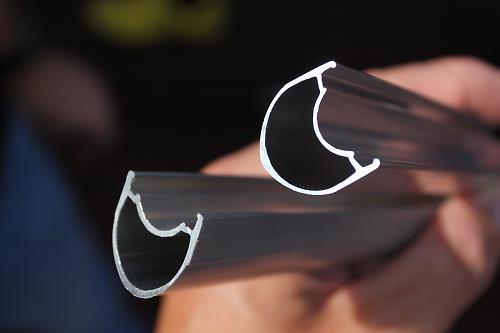
The rim is a very rounded profile at the spoke face and shallower than last year's wheel, and it has a wide (22mm) section which Bill tells us is ideal for tubeless tyres, although for the most part he's been riding them with 135g Maxxis 20mm tyres and lightweight tubes; the wide section means the 20mm tyre rides more like a 22mm.
The other big news is that the wheelset is tubeless ready. Bill's a big fan of tubeless in theory, but not of the current UST tubeless tyres available. "The road tyre makers need to learn what the mountain bike tyre makers did: most people don't want a heavy UST tyre", he told us. "MTB racers don't use tubeless tyres, they use standard tyres and sealant". The change he'd like to see is toward tubeless ready tyres, with the square bead that you need to seal high pressures against the rim. So far he's not had much success with sealing standard road tyres with sealant; the high pressures tend to push the sealant out through even the tiniest holes in the casing, and the pressure tends to blow the bead off the rim without a tube to push it into place.

Magnesium isn't the most durable of metals, and certainly these aren't wheels that you'd dig out for salty winter training rides – salt is the biggest enemy of the magnesium rim – but American Classic have changed the alloy this year to one that's more resistant to corrosion, and also a bit stronger. It's also more expensive, which adds to the cost of the complete wheelset, but Bill reckons the lower weight and greater longevity will outweigh the additional spend. The wheels feature 2:1 spoke lacing on the rear to equalize the tension in the spokes, and they also get American Classic's excellent alloy freehub with steel inserts to stop your cassette chewing up the splines.
If you haven't got deep enough pockets for the Mag wheels then American Classic also offer a similar section tubeless-ready wheel with an Aluminium rim, which is a bit heavier at a claimed 1179g but still not exactly weighty.
Nuvinci Harmony
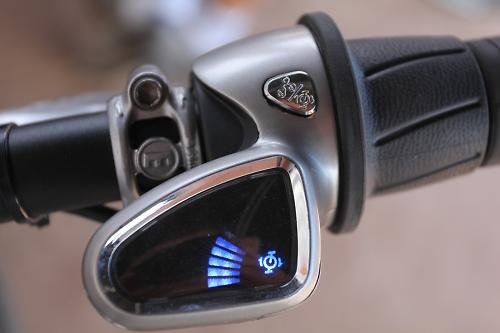
We've been following the Nuvinci hub with interest, and in fact we have one in the office waiting to get tested. If you haven't come across it before, Nuvinci's N360 hub is a constantly variable transmission design, which uses a series of bearings and a torque fluid to transfer power from the chain to the tyre.
The Harmony system is an add-on to the N360, predominantly designed for electric bikes. Nuvinci have discovered, in discussions with e-bike manufacturers, that riders are much less likely to change gear on an assisted bike, when there's a motor to take the strain. In fact, man people never change gear at all, and the strain on the motor of pulling away from a standstill in a high gear can dramatically reduce battery life.
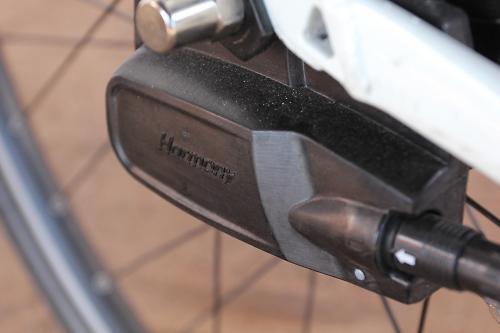
Harmony uses a cadence sensor at the rear wheel and can adjust the drive ratio to keep a constant cadence over varied terrain. There's two flavours of the system: a basic controller which allows the bike manufacturer to preset three cadences, and a more advanced twist-grip controller. This allows the rider to twist to adjust the cadence, and there's also a button to switch to a standard mode where the rider controls the drive ratio instead.
We had a ride out on the basic system mated to the excellent Bosch pedelec platform, and have to say that it works pretty well. Our bike came with preset cadences of 40, 60 and 80 rpm and having chosen the latter we pootled around for around 5km in the hills above Argenbühel to see if could cope with the changes in gradient, and it did admirably. The transmission felt very smooth, and most of the time it wasn't really possible to tell when the ratio was changing, although every now and then it would make a more major adjustment that you could feel.
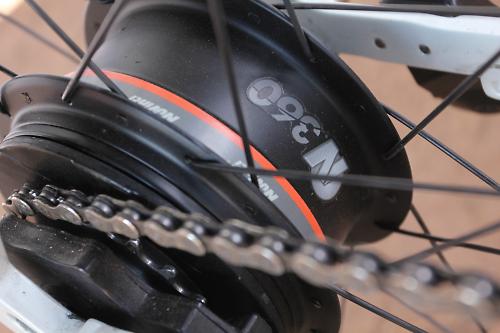
Harmony looks to be a nigh-on perfect application of the Nuvinci hub. The main issues with the hub – the weight, and the slight loss in efficiency – aren't so much of an issue on a pedelec bike, and the constant cadence works well. Nuvinci were busy calling it "cruise control for your legs", and though we wouldn't go that far it's certainly an impressive system.
Vittoria Diamante Pro
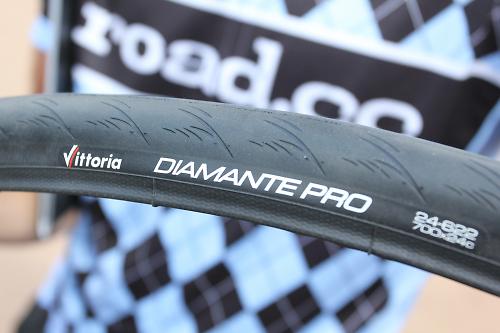
Vittoria was showing off a new road tyre at the Demo Day. The Diamante Pro features a radial casing with all the nylon fibres running perpendicular to the direction of the tread.
Well, almost perpendicular. There needs to be some overlap to give the tyre better structural integrity, and in fact the fibres are at about 85°. That's as opposed to the more usual 30° or 60° angles used. The idea is that instead of creating a crossed pattern, where fibres that deform have to pull other fibres out of place, the fibres in the radial casing deform more independently, meaning less energy dissipation and less rolling resistance.

Certainly, in the hand the Diamante Pro feels like a very flexible tyre indeed, and its 220TPI (threads per inch) nylon casing felt very similar to the sample of the 320TPI cotton-cased Open Corsa tyre they also had on the stand. How that will translate to the road remains to be seen; Vittoria reckon the tyres will be in the shops in January.
Canyon steel protoype

We were expecting to see plenty of manufacturers embracing steel this year, it is making a comeback after all. But it's fair to say that we weren't expecting a steel bike from teutonic stiffness-meisters Canyon. They had one, though, and a very lovely thing it was too, finished in a white powder coat with white vinyl decals. All very understated and pleasant, with a tan leather Regal saddle and matching bar tape, and Campag's alloy Athena 11 groupset (save for the carbon levers). It's not a horizontal top tube, but it's not far off, and the overall look is very pleasing. Very pleasing indeed.
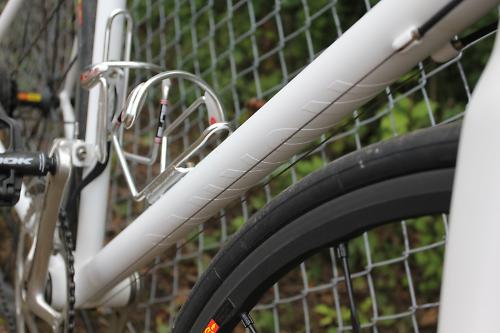
And are they going to make it? Well, maybe. They were canvassing opinion at the Demo Day and everyone that we saw looking it was doing so in a wistful kind of a way, as if they were imagining themselves riding such a bike, somewhere in the mountains. Just before a café stop.
It was pretty light, too, for a steel road bike. We're not sure how light but the picky-up test revealed it to be 'lighter than we thought it would be'. No real idea of how much it would cost, but it sounds like it would be a bit spendy. Stay tuned.
Crank Brothers Premium tools
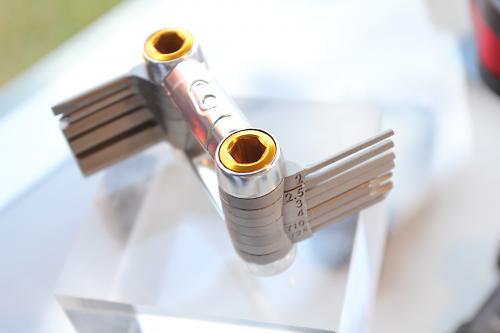
Crank Brothers had one of their new range of premium tools at the Demo Day. The Pixl is the smallest of the three, the other two being the Pica and Pica+ which sport a chain tool as well as a wide range of Allen keys and drivers.
They're pretty tools and not as heavy as you might think from looking at them, due to the alloy side plates. The bits themselves are investment cast stainless steel, and the premium tools all feature a ratchet system: the two end bolts are sprung, and the individual tools have a series of bumps and hollows that allow them to click into position at certain points, to give you a more sturdy platform for your roadside tweaking.
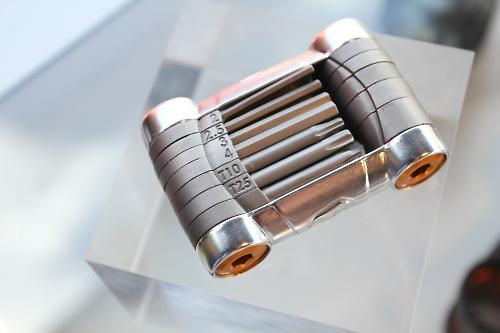
The Pixl we saw has Allen keys from 2 to 8mm in the useful sizes, as well as Phillips and flat head screwdrivers and T10 and T25 Torx drivers. The Pica adds a chain tool and spoke wrenches (but, oddly, loses the flat head screwdriver) and the Pica+ has 8mm and 10mm socket wrenches to boot.
UK pricing is TBC but at €60-70 RRP over here in mainland Europe, they're not going to be cheap.
Stringbike

What do we love about Eurobike? The meat, cheese and bread diet for one thing. Sleeping top to tail in a caravan for a week, for another. Those, and the fact that we get to see products that are intricate, overdesigned and lovely in their own way, but destined to fall by the wayside. Products like the Stringbike.
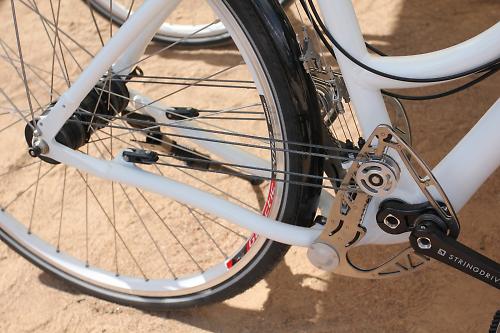
What is it? A bike powered by string, of course. Powered by two strings, which are driven by a massively complicated system of cams, pulleys, wheels and parts that we don't know the name of. The practical upshot of which is that there's two strings, one each side, pulling the bike forward as you pedal. Amusingly, they also pull the bike forward if you pedal backwards, albeit in a massive gear thanks to how the pull ratios work.

You can change gear by adjusting the position of the main wheel on the triangle bit (technical term there). This requires the control cables to be split to independently shift each side of the bike. That means a lot of cables, coupled with a lot of moving parts and string, which historically isn't as durable as chain. We can't see it catching on over here.
The Stringbike's one possible USP is that you can have different pull ratios on the two sides, which could help if you have a disability in one leg. Other than that, it looks like a lot of work to solve a problem that doesn't exist. It's not the last example of that we'll see, we can tell you that now...
Dave is a founding father of road.cc, having previously worked on Cycling Plus and What Mountain Bike magazines back in the day. He also writes about e-bikes for our sister publication ebiketips. He's won three mountain bike bog snorkelling World Championships, and races at the back of the third cats.
Latest Comments
- Gkam84 5 min 17 sec ago
You missed the Gendarmerie bike at Paris Nice, great parking in a ditch
- Cycloid 6 min 47 sec ago
I've seen increased rates ranging from 15 - 24 - 40 depending on the Source, Year and type of Incident Killed - KSI - All injuries...
- Steve K 53 min 33 sec ago
I'm 55 and gained most of my cycling fitness after the age of 42. I've also never done an FTP test nor used a power meter, and I weigh under 70kg ...
- wtjs 54 min 2 sec ago
In the 60s, there was a pop record show which played new releases, and a famous Brummie girl judge used to give points out of 5: 'Oi'll give it...
- Rendel Harris 1 hour 7 min ago
Indeed, I spent a few moments frowning at that in perplexity. Clearly being too slammed is what's going to cause you discomfort, I can't imagine...
- Secret_squirrel 1 hour 25 min ago
In which case the mere fact of having an out of spec motor is enough to criminalise someone. (Rightly or wrongly - at least its clear)...
- mdavidford 1 hour 34 min ago
Doesn't appear to be anything to do with money in this case - rather it's a legal dodge. From what I can understand, the government, in it's wisdom...
- mdavidford 4 hours 2 min ago
Except that presumed liability is usually a matter of civil liability, so you wouldn't be prosecuted as a result of it (though you may be held...
- Rendel Harris 4 hours 51 min ago
Well, I finally got some response from my repeated requests as to what was happening with the alleged database and was supplied with a link which...
















































































Add new comment
5 comments
So... Pedalling the Stringbike is a bit like pull starting a lawnmower or chainsaw without the advantage of possibly starting a petrol engine....
That'll sell.. somewhere.
any new Canyon crabon road bikes being shown at Eurobike?
That white Canyon sure looks purty...
Eurobike and no fixies?
don't you worry, there'll be fixies